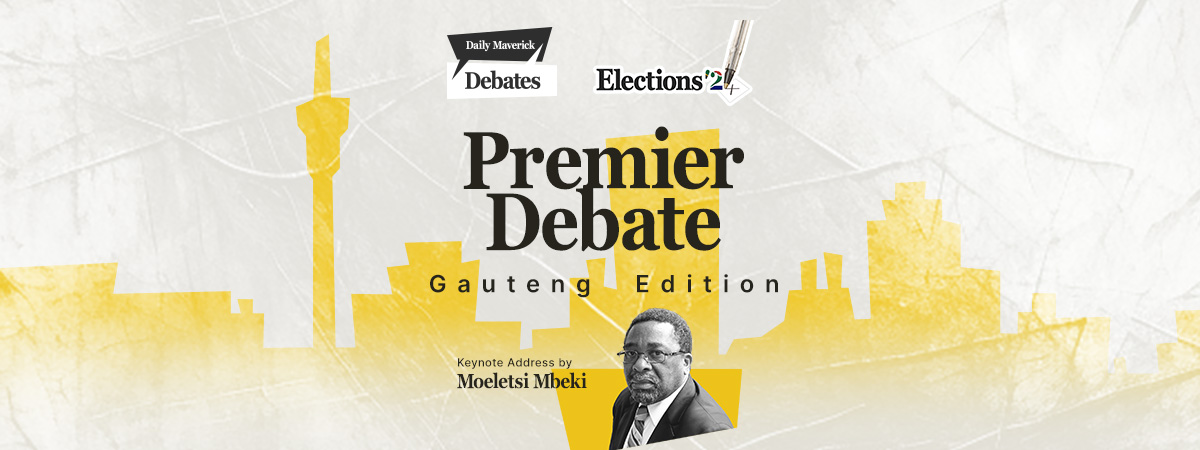When I was nine years old I moved with my parents to Alberton (a town just slightly less glamorous than Benoni, Boksburg or Springs), situated on the East Rand of Johannesburg. For the next four years I attended Randhart Laerskool, dressed in a chocolate brown and mustard yellow school uniform.
After attending the first parent-teacher evening my mother arrived home and announced that she was not impressed with the school. Taking a drag on her Ransom Select Multi Filter Mild cigarette she sighed and shook her head in mock sadness. “The headmaster,” she announced, “must have only got the job because he was a member of the Broederbond.”
She waved her hand as if to shoo away an imaginary fly and gave my father a sharp, disdainful, look. “This town seems to thrive on mediocrity.” She tipped her cigarette ash into the glass ashtray embossed with an image of the Voortrekker Monument and raised her impeccably plucked eyebrows. “Let’s face it, he’s not the sharpest tool in the shed.”
Shocked, I asked her how she could say this. She smiled a suspicious little smile, took another drag on her cigarette and said firmly. “Did you see how close that man’s eyes are to one another? How narrow his forehead is? Those types cannot be trusted. He looks like an imbecile.”
It took many years for me to stop judging people’s intelligence based on how close their eyes are to one another and how narrow their foreheads are. (Although I still recoil in dismay when I hear that somebody belonged to the Broederbond.)
My mother, as somebody who attended Dutch Reformed church services every Sunday and did the flower arrangements for the christenings in the church, would never have thought to worry about the fact that Randhart Laerskool indoctrinated us to embrace a virulent strand of Christian Nationalist education. Neither would I. Every Monday and Friday at school assembly I enthusiastically sang along to the school song:
Dit is hier in Randhart Laer/ waar ons werk en speel en bid./ Ons wil trou wees aan die Vader/ wat ons liefhet en beskut….. Ons is kinders van die aarde/ met ons oë gerig na Bo,/ want dit is ons skool se leuse om almal saam te sê Ons Glo!” (“It is here in Randhart Primary/ where we work and play and pray./ We want to honour our Father/ who loves and protects us…../ We are children of the land/ with our eyes raised towards the heavens,/ because it is our school’s motto/ to say together, We Believe!”)
Randhart Laerskool is one of the six schools which next year will have to defend their policy on religious observance in the Johannesburg High Court. The school continues to espouse a “Christian ethos” – although it now claims that taking part in religious observance at the school is entirely voluntary. Judging from the pictures on its website, the school continues to cater almost exclusively for white children. Its hair policy continues to prohibit “strange hairstyles”.
Section 15(1) of the South African Constitution guarantees for everyone “the right to freedom of conscience, religion, thought, belief and opinion”. This means one has the right to entertain your religious beliefs, the rights to declare those beliefs openly and without fear of hindrance or reprisal and the right to manifest such beliefs through practice.
One also has the right not to believe in any form of religion, to declare this publicly without fear of hindrance or reprisal and to act in accordance with this non-belief. The Constitution thus places belief and non-belief on an equal footing. It demands of us to understand that it is normal for people to embrace any type of religion or not to believe in a God at all.
But, unlike in the USA, the South African Constitution does not demand an absolute separation between religion and the state. Section 15(2) states that “[r]eligious observances may be conducted at state or state-aided institutions, provided that those observances follow rules made by the appropriate public authorities; they are conducted on an equitable basis; and attendance at them is free and voluntary”.
The primary purpose of this provision is to ensure that schools respect the differences in the beliefs (or non-beliefs) of the children in a school. State-aided schools that claim to embody a “Christian ethos” are going to have two problems in convincing a court that it is protected by section 15(2) of the Constitution.
First, the exception contained in section 15(2) applies only to “religious observance”. In other words, the exception only applies to specific religious ceremonies or ceremonies for another purpose where religious observance will take place.
This means a school would be permitted to make rules that would allow for the equitable treatment of various types of religion (Christianity, Islam, Judaism, Hinduism, Buddhism and the like) as well as non-religion to be accommodated at formal events where religion may be observed. It does not require equal treatment, but it does require fair treatment of various forms of belief and non-belief.
But this section does not, on its face, allow a school to infuse other aspects of the school and the education provided there with a specific religious ethos or to promote specific religious values in the school in some other way. Although the school could offer a subject on religious studies (in which all the major religions as well as atheism are discussed), it would have to ensure that other aspects of the school are not permeated with the ethos associated with a specific religion as this would place pressure on all children to conform to a particular religious view of the world.
This is because section 15(2) is restricted to “religious observance” and because it would be impossible for children to opt out of the religiously “tainted” practices and habits at the school, to be protected from the invariably religious proselytisation by teachers, or from the underlying (often hidden) religious assumptions that may permeate the teaching of non-religious subjects at a school.
At Randhart Laerskool, for example, children will be forced to sing the religious school song, and will probably be confronted by teachers and a headmaster (who may perhaps be unaware that Christianity comes in many different shapes and sizes) who will promote “Christian values” and a “Christian world view” to the exclusion of all other religious views or world views not based on religion.
There is therefore a strong likelihood that children at this school (as at many other schools) will be subjected to the subtle coercion to accept Christianity as the desirable norm to aspire to. This would be unconstitutional and impermissible in terms of section 7 of the South African Schools Act.
The second problem faced by the schools relates to the first – that it is close to impossible to ensure that “religious observance” at a school (whichever way one wishes to define “religious observance”) remains voluntary when the school espouses a “Christian ethos”. As Justice Chaskalson stated in S v Lawrence , S v Negal ; S v Solberg:
“In the context of a school community and the pervasive peer pressure that is often present in such communities, voluntary school prayer could also amount to the coercion of pupils to participate in the prayers of the favoured religion. To guard against this, and at the same time to permit school prayers, section 15(2) makes clear that there should be no such coercion.”
In a separate judgment in the Lawrence case, Justice O’Regan, noting that religious coercion can take place in subtle ways, stated as follows:
“Direct coercion, of course, is only half the problem. As Black J stated in Engel v Vitale: ‘When the power, prestige and financial support of government is placed behind a particular religious belief, the indirect coercive pressure upon religious minorities to conform to the prevailing officially approved religion is plain.’”
When the power, prestige and financial support of the school governing body, the headmaster and the teachers are placed behind the Christian religion – as is invariably the case at a school with an avowed “Christian ethos” – there will almost certainly be unconstitutional coercion (either of a direct or an indirect nature) of religious minorities or atheists to conform to and to embrace the “Christian ethos” of the school. This would constitute an infringement of the freedom of religion, belief and conscience protected by section 15 of the Constitution.
Schools that embrace an avowed “Christian ethos” are trying to impose their religious views about how the world ought to work and what must be valued and promoted on an entire school community.
This desire to impose uniformity of belief on all children in a school runs counter to the basic values contained in the Constitution. As Justice Sachs noted in Minister of Home Affairs and Another v Fourie and Another; Lesbian and Gay Equality Project and Others v Minister of Home Affairs and Others:
“The acknowledgment and acceptance of difference is particularly important in our country where for centuries group membership based on supposed biological characteristics such as skin colour has been the express basis of advantage and disadvantage. South Africans come in all shapes and sizes. The development of an active rather than a purely formal sense of enjoying a common citizenship depends on recognising and accepting people with all their differences, as they are. The Constitution thus acknowledges the variability of human beings (genetic and socio-cultural), affirms the right to be different, and celebrates the diversity of the nation.”
Schools have a legal duty to embrace these constitutional values. This requires them to change their policies, practices and ideological orientation and (for those that have not done so yet) to accept that they can no longer conduct their affairs as if all children in their school are white, middle class, and Christian. Nor are they permitted directly or indirectly to coerce children who happen not to be white, or middle class or Christian, to conform to the values of the numerical majority or to the values of the culturally and economically dominant group which happens to control the school governing body.
As the right to belong to a cultural, religious or linguistic community and to practise one’s religion (which is protected by section 31 of the Constitution) is made subject to all other rights in the Constitution – including the right not to be discriminated against on the basis of one’s religion or belief in section 9 and the right to freedom of religion and belief in section 15 – the school would not be able to argue that this associational right trumps the right of children who do not belong to the numerical majority or the social and economically dominant group in a school.
Several years ago Randhart Laerskool wisely changed the chocolate brown and mustard yellow school uniforms into navy, red and white. Now they must prepare themselves also to ditch the “Christian ethos” of the school in order to take a step closer to conforming to the letter and the spirit of the Constitution. DM

















